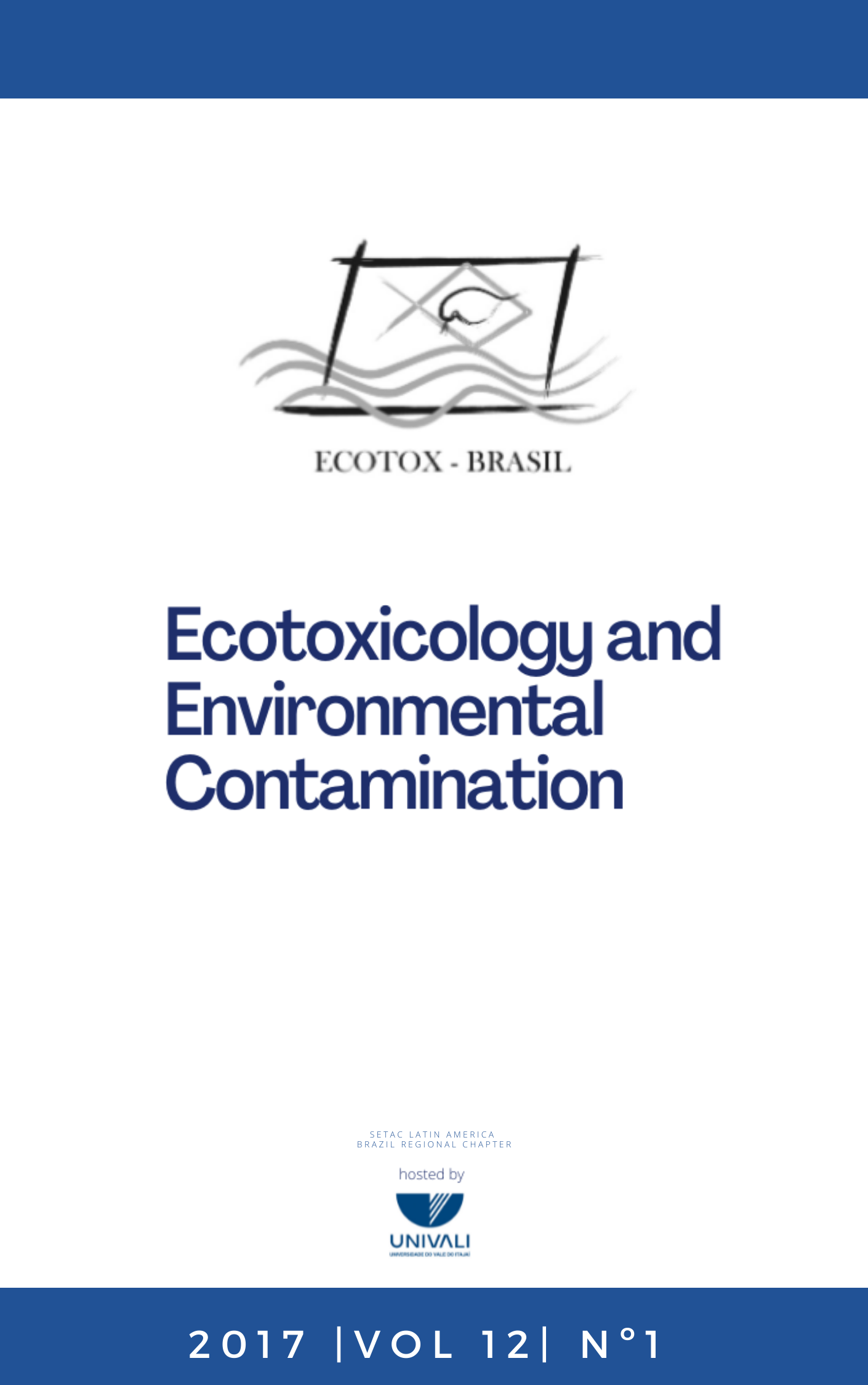Environmental risk assessment of freshwater sediments contaminated with triclosan
DOI:
https://doi.org/10.5132/eec.2017.01.02Abstract
The purpose of this study was to assess the environmental risk of sediments contaminated with triclosan to thropical aquatic invertebrates. Acute toxicity assays with Chironomus xanthus and chronic toxicity assays with Ceriodaphnia dubia were performed using spiked sediments with environmentally relevant concentrations of triclosan. We obtained a lethal concentration (LC50 96-h) in acute toxicity assays with C. xanthus of 45.26 μg g-1 and a no observed effect concentration (NOEC) and lowest observed effect concentration (LOEC) for C. dubia of 5.78 and 6.94 μg g-1, respectively. According to equilibrium partitioning theory, these spiked sediment values are equivalent to interstitial water LC50 values of 47.28 μg L-1 for C. xanthus and an LOEC of 7.24 μg L-1 for C. dubia. Our results suggest that sediments contaminated with triclosan represent high risk to freshwater organisms, since this compound has been reported on the order of magnitude of μg g-1 in sediment near discharge of untreated domestic and industrial wastewater.Downloads
Downloads
Published
How to Cite
Issue
Section
License
Copyright © 2006 ECOTOX-Brasil
Copyright notice: It is a condition for publication that manuscripts submitted to this journal have not yet been published and will not be simultaneously submitted or published elsewhere. By submitting a manuscript, the authors agree that copyright for their article is transferred to the Sociedade Brasileira de Ecotoxicologia (ECOTOX-Brasil) if and when the article is accepted for publication. The copyright covers the exclusive rights to reproduce and distribute articles, including reprints, photographic reproductions or any other reproduction of a similar nature, including translations. No part of this publication may be reproduced, stored in a retrieval system or transmitted in any form or by any means, electronic, mechanical, photocopying, recording or otherwise, without permission of the publisher.
Notice: While every effort is made by the EEC, editors and editorial board to see that no inaccurate or misleading data, opinions or statements appear in this journal, they wish to make it clear that the contents of the articles and advertisements published herein are the sole responsibility of the contributors or advertisers concerned. Accordingly, the EEC, the editorial board and editors and their respective employees, officers and agents accept no responsibility or liability whatsoever for the consequences of any inaccurate or misleading data, opinion or statement.




